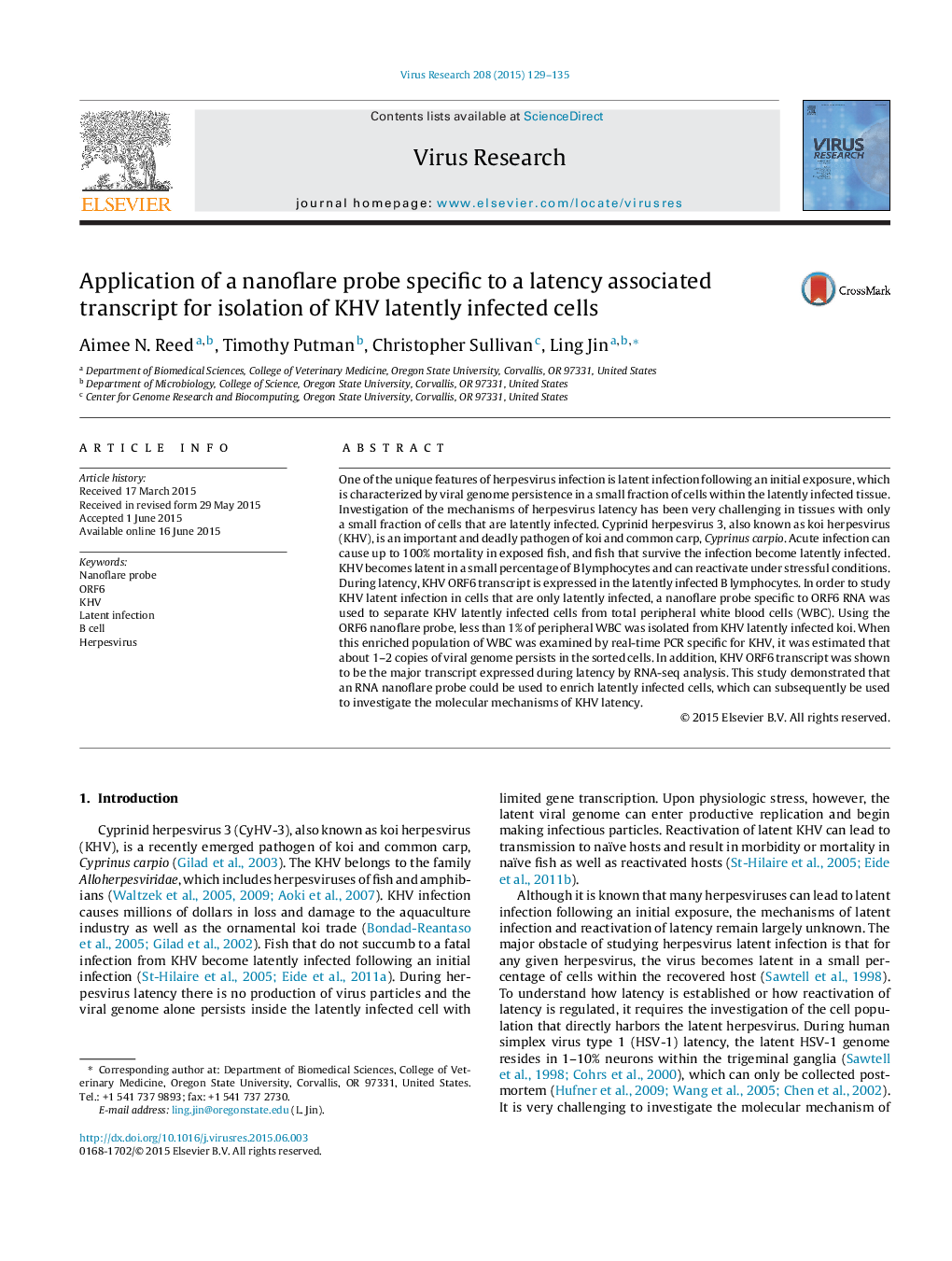| Article ID | Journal | Published Year | Pages | File Type |
|---|---|---|---|---|
| 3428122 | Virus Research | 2015 | 7 Pages |
•RNA nanoflare probe can be used to isolate cells with specific mRNA expression.•ORF6 specific nanoflare probe can be used to isolate cells latently infected by KHV.•WBC with KHV latency can be sorted based on ORF6 expression using the nanoflare probe.•The cells sorted based on ORF6 mRNA expression can be used for RNA-seq analysis.•ORF6 transcript was also found to be the major mRNA expressed in the latently infected cells.•1–2 copies of KHV genome was detected in ORF6+ cells.
One of the unique features of herpesvirus infection is latent infection following an initial exposure, which is characterized by viral genome persistence in a small fraction of cells within the latently infected tissue. Investigation of the mechanisms of herpesvirus latency has been very challenging in tissues with only a small fraction of cells that are latently infected. Cyprinid herpesvirus 3, also known as koi herpesvirus (KHV), is an important and deadly pathogen of koi and common carp, Cyprinus carpio. Acute infection can cause up to 100% mortality in exposed fish, and fish that survive the infection become latently infected. KHV becomes latent in a small percentage of B lymphocytes and can reactivate under stressful conditions. During latency, KHV ORF6 transcript is expressed in the latently infected B lymphocytes. In order to study KHV latent infection in cells that are only latently infected, a nanoflare probe specific to ORF6 RNA was used to separate KHV latently infected cells from total peripheral white blood cells (WBC). Using the ORF6 nanoflare probe, less than 1% of peripheral WBC was isolated from KHV latently infected koi. When this enriched population of WBC was examined by real-time PCR specific for KHV, it was estimated that about 1–2 copies of viral genome persists in the sorted cells. In addition, KHV ORF6 transcript was shown to be the major transcript expressed during latency by RNA-seq analysis. This study demonstrated that an RNA nanoflare probe could be used to enrich latently infected cells, which can subsequently be used to investigate the molecular mechanisms of KHV latency.
